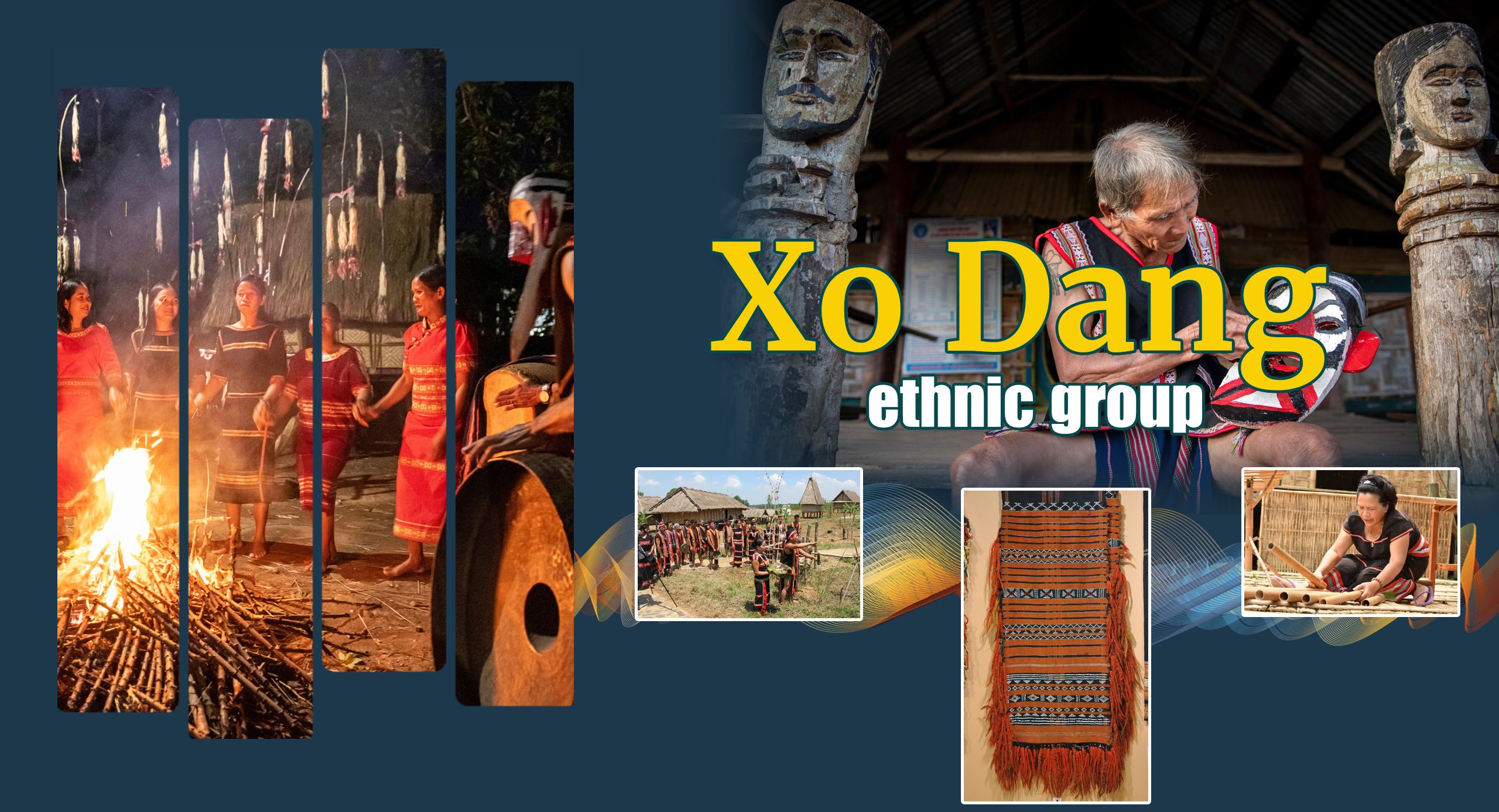
The Xo Dang people mainly live in the Central Highlands. Throughout the process of formation and development, the Xo Dang people have continued to preserve many unique traditional cultural values.
1. Historical Origin
The Xo Dang people have a very long history of living in the North Central Highlands. Around the years 1855-1885, when the French tried to consolidate the government in Indochina and there was anarchy among the mountain tribes, the Xo Dang people expanded their living territory to neighbouring tribes.
The Xo Dang ethnic group is also known as Xo Deng, Ca Dong, Todra, Hdang, Manam, Ha Lang, Ka Rang, Bri La Teng, or Con Lan.
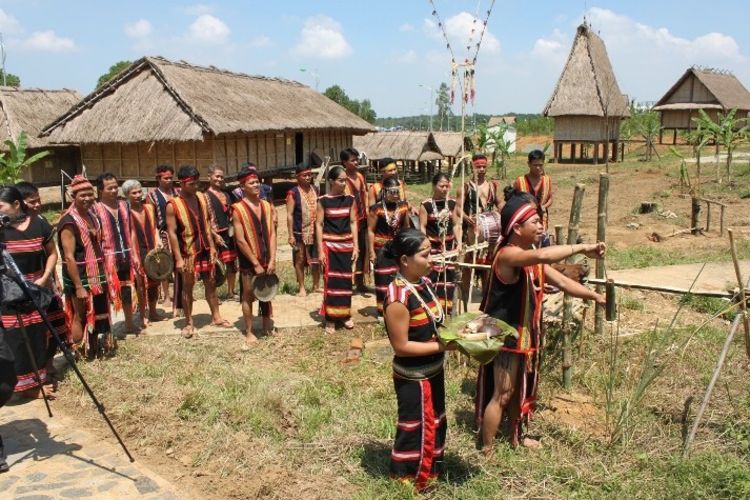
The Xo Dang people prepare to perform the water resource worship ritual. (Photo: Vietnam National Village for Ethnic Culture and Tourism)
The Xo Dang people prepare to perform the water resource worship ritual. (Photo: Vietnam National Village for Ethnic Culture and Tourism)
2. Geographical distribution
The Xo Dang people are one of 12 ethnic minorities in the Central Highlands, residing mainly in Kon Tum province and parts of Quang Nam, Quang Ngai, Dak Lak, and Gia Lai.
3. Population, language
- Population: According to the Survey of 53 ethnic minorities issued on April 1, 2019, there are 212,277 Xo Dang ethnic people in Vietnam, including 104,513 men and 107,764 women. The average household size is 4.3 people per household, while 93.7% of the population lives in rural areas.
- Language: The Xo Dang ethnic group uses the Xo Dang language - a language belonging to the Mon-Khmer group (Southern Asian language family), close to the Hre, Ba Na, and Gie Trieng languages. The Xo-Dang people also have a script based on the Latin alphabet, a new system that was formed decades ago.
4. Main features
- Traditional social institutions: The Xo Dang people live together in villages (called as 'ploi'). In each traditional village, there are many elongated houses where many generations of Xo Dang families live together. The head of the village is the village elder - who governs all general activities in the village and represents the villagers. People in a Xo Dang village always take care of and help each other, so it is rare to see a case where one person is hungry while another's barn is full.
In terms of family, the Xo Dang people are divided into extended multi-generation families (called as 'On veă'). The multi-generation families usually consist many couples and their descendants with the same bloodline living together under an elongated house, while the small families (called as 'Kla on Veă') consist 2-3 generations living together.
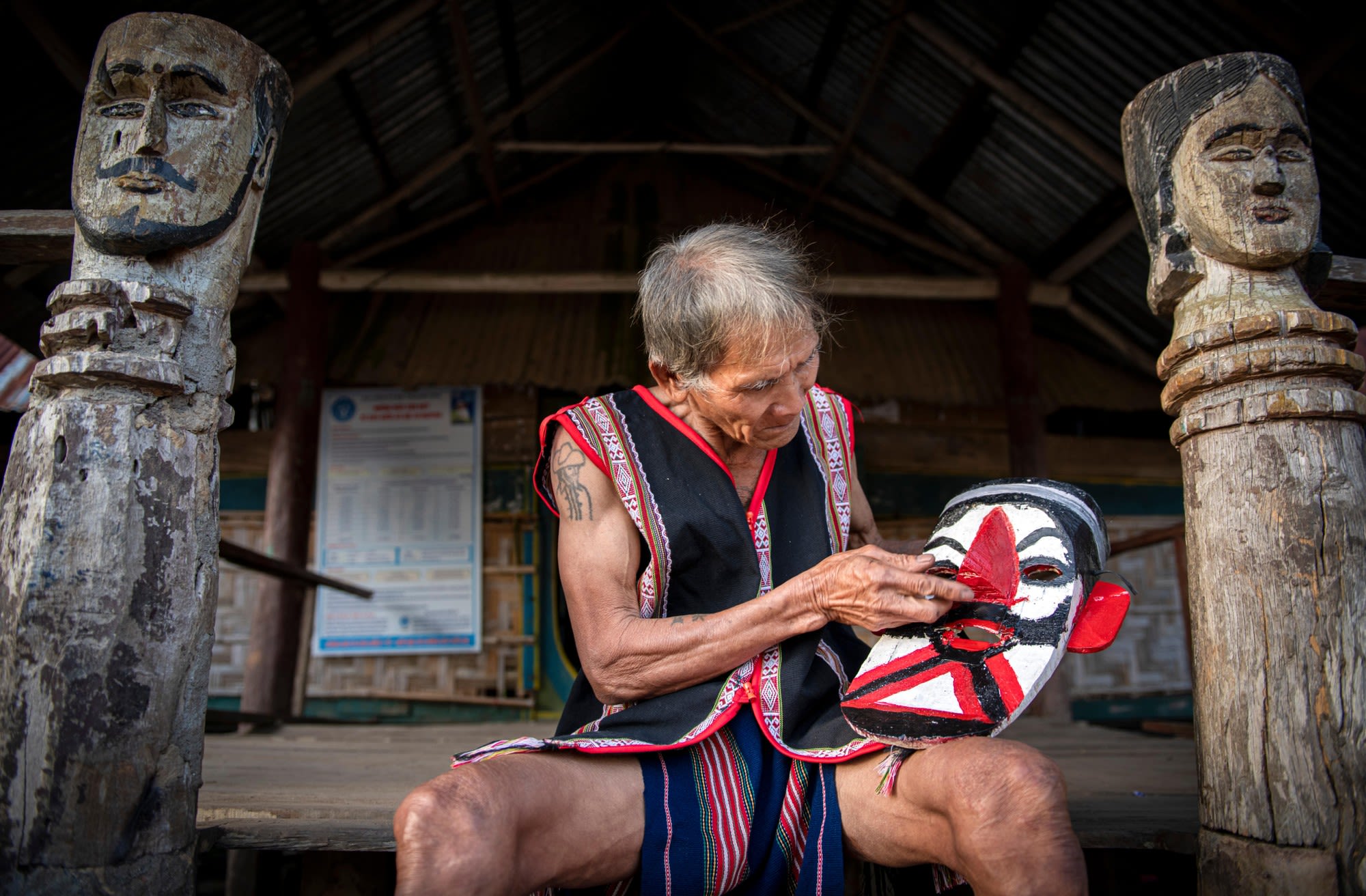
An elderly Xo Dang man. (Photo: Thanh Dat)
An elderly Xo Dang man. (Photo: Thanh Dat)
- Religion and beliefs: The Xo Dang people believe in animism and worship many spirits related to the production of food and life. In addition to the God world, the Xo Dang people also believe that each person has three types of soul: the ‘mhoa con xoang’ or ‘con lung’ soul is always with the body, both in life and in death; the 'mhoa plo' soul often wanders, so it is often bullied by ghosts and makes people sick; and the 'mhoa mngo mnghieng' soul often lives in termite nests, so there are many related rituals.
- Costume: Xo Dang women wear shirts (ao goh), skirts (ktac), and shoulder scarf. Men wear scarves (trang) or loincloths (kpen tich).
- Cuisine: The main food source of the Xo Dang people is rice, including plain rice and sticky rice. At the beginning of the year, when the Xo Dang people implement the rituals to the Water God when repairing water pipes. When they hunt large animals, the Xo Dang gather at communal houses to eat together for a meal. The food at such times is mainly rice and meat.
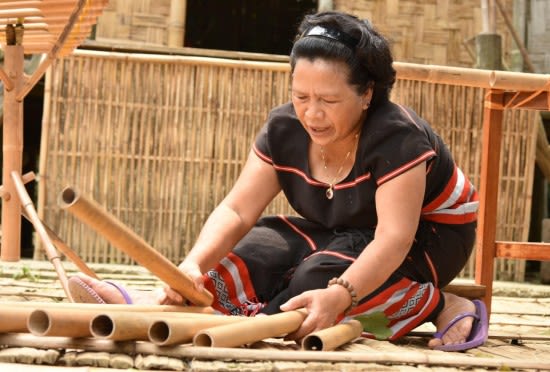
Artisan Y Sinh makes a Klong Put - a traditional instrument of the Xo Dang people. (Photo: Ethnicity and Development Newspaper)
Artisan Y Sinh makes a Klong Put - a traditional instrument of the Xo Dang people. (Photo: Ethnicity and Development Newspaper)
- Education: According to the 2019 survey of 53 ethnic minority groups, the percentage of people aged 15 years and over who can read and write is 76.9%, the net attendance rate for children of primary school age is 100.7%, the junior secondary school age is 85.1%, and of the high school age is 35.7%. 19.1% of Xo Dang children are out of school.
- Musical instruments: The musical instruments of the Xo Dang people are very diverse, with the many various types including the t'rung, the 'lo le' or 'ga vo' flutes, the monochord (called the 'brung'), or the 'brooc tru'.
- Festivals: The Xo Dang people have many festivals during the year, such as: the buffalo stabbing ceremony (Ka Po); the new rice festival; and the water resource worship ritual. In particular, the lunar new year Tet is the biggest holiday for the Xo Dang to summarize the harvest after a farming season, and to thank the gods (called as 'Giang') for the bountiful harvest.
5. Economic conditions
Some Xo Dang people know how to grow wet rice, typically the Mnam group, but follow primitive methods. Slash-and-burn farming still plays a key role in the economic activities of the Xo-dang people, with rudimentary farming methods. In addition to rice, the Xo Dang also grow millet, maize, cassava, gourd, squash, tobacco, pineapple, banana, and sugarcane.
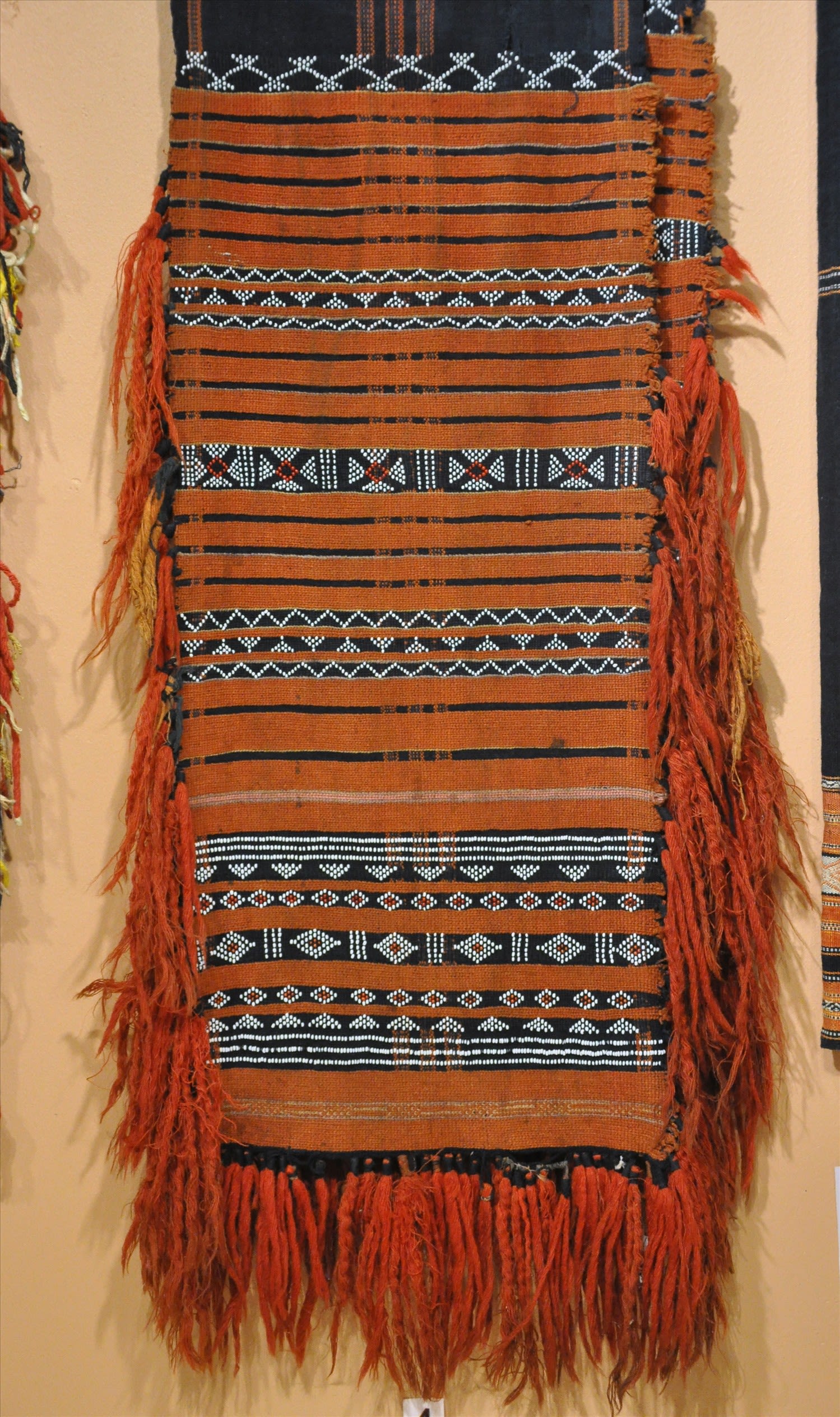
Flower loincloth - a unique feature of the Xo Dang people. (Photo: Ethnicity and Development Newspaper)
Flower loincloth - a unique feature of the Xo Dang people. (Photo: Ethnicity and Development Newspaper)
The Xo Dang also know how to weave and forge (developed in the Ta Dra group). In some places, the Xo Dang people know how to pan for placer gold. Knitting also developed in the Xo Dang community. Nowadays, people also know how to use money as an object of exchange.
According to the Survey of 53 ethnic minorities issued on April 1, 2019, the unemployment rate was 0.66%, the rate of trained workers with degrees and certificates was 4.3%; the proportion of labourers working in the non-agricultural sector was 4.8%; the proportion of labourers holding management positions or technical qualifications at high and middle levels is 1.7%; the rate of poor households was 44.9%, the rate of near-poor households was 9.8%; the percentage of the local households using clean and hygienic water has reached 66.5%; and the percentage of households using grid electricity for lighting is 93.4%.